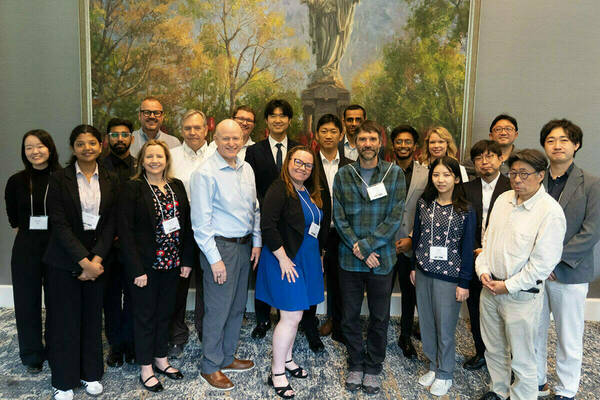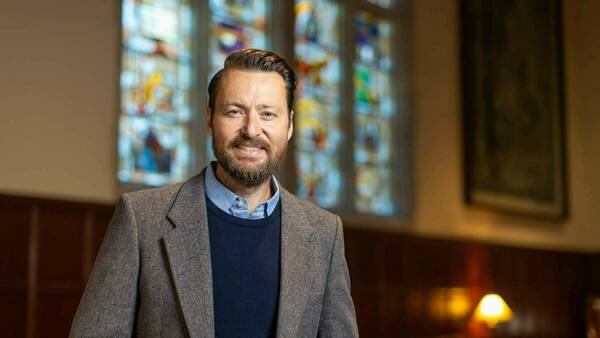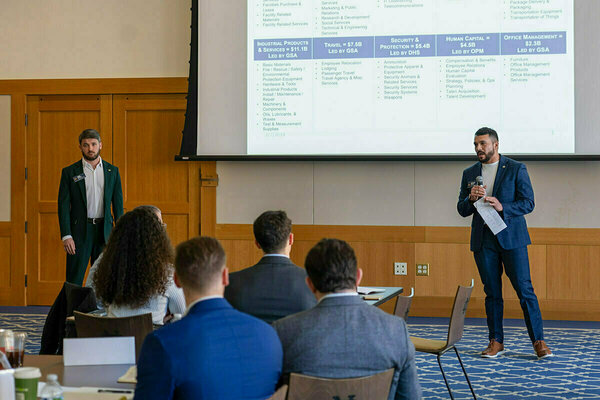Synchronized forces behind flower-like patterns in plasma waves
Neither a solid, liquid, nor gas, plasma doesn’t play by the same rules as the other states of matter. Its unique properties are particularly evident at plasma-liquid interfaces, where chemical, electric and fluid forces collide to create waves.
In a recent paper in Physical Review Letters, engineers at the University of Notre Dame identify a new class of plasma-liquid waves that could be harnessed for multiple applications, from more effective water remediation technologies to gentler cancer treatments.
You throw a rock in a pond and you see ripples move outward because you’ve deformed the surface,” said Paul Rumbach, associate teaching professor in aerospace and mechanical engineering at the University of Notre Dame and co-author on the paper. “At the plasma-liquid interface, electrostatic force deforms the liquid, creating waves and motion.”
To produce these waves, the team ran electrical current through a needle-shaped electrode suspended above a petri dish of saline solution.
“You’d expect that the electrical current would generate just a single spot of plasma, like a flashlight beam on the surface,” said Rumbach. “But, if you turn up the voltage, that single spot turns into a ring, and, as you turn up the power higher, that ring breaks up into a pattern of spots that look like the petals on a flower.”

These floral plasma patterns often spin in a circle—a motion caused by the electrical interaction between the plasma and liquid.
When a liquid is flat, the pressure on it is evenly distributed, however, when the surface curves, the pressure changes. These unusual plasma-liquid waves form when pressure exerted by the plasma (Maxwell pressure) interacts with a liquid surface that has been curved by electrohydrodynamic forces. Plasma and liquid motions fall into sync, thus amplifying each other’s effects.
Motion is an important byproduct of this process. Currently, the water contaminant PFAS (per- and polyfluoroalkyl substances) can be destroyed by plasma, only if it happens to be on the micrometers-thin, plasma-liquid boundary. The team’s plasma-generated waves could mix the contaminated water, directing toxins toward the surface to be irradiated and pushing the by-products away.
“Plasma is a gentler, more efficient form of radiation that can be used to destroy contaminants in water or treat cancer,” said Rumbach. “Understanding how it interacts with water is critical for developing these applications.”
In addition to Rumbach, postdoctoral scholars Oles Dubrovski and Jinyu Yang at the University of Notre Dame contributed to this research, which was supported by the National Science Foundation, the Army Research Office, and the Notre Dame (ND) and Pontificia Universidad Católica de Chile (UC Chile) Scholars Joint Research Award.
Latest Research
- Fighting for maternal healthThe United States has the highest maternal mortality rate of developed nations. An innovative postpartum care model from Notre Dame can save mothers around the globe. Read the story Originally…
- NSF Cyber SMART’s fall meeting shapes fifth year of project, legacy and future plans, and adds new memberThe U.S. National Science Foundation (NSF) Cyber SMART center gathered for its fall meeting on the University of Notre Dame campus this September. The meeting served as a checkpoint with progress reports and new projects from research leads and students…
- Slavic and Eurasian studies professor wins Humboldt fellowship to research how Russia’s religious past shapes its presentWhen Russia invaded Ukraine on Feb. 24, 2022, Sean Griffin realized his second book needed a new title. Griffin, an associate professor in the University of Notre Dame’s Department of…
- Notre Dame’s R.I.S.E. AI Conference builds interdisciplinary collaboration to inform human-centered artificial intelligenceAs artificial intelligence (AI) transforms nearly every sector of society — from healthcare and education to governance and global development — a critical question emerges: How can we conscientiously design and deploy these powerful technologies to positively impact society? This…
- University of Notre Dame joins the Global Coalition of Ukrainian StudiesThe University of Notre Dame has joined the Global Coalition of Ukrainian Studies after signing a Memorandum of Cooperation (MOC), formalized on September 24, 2025, at the Ukrainian Institute of America in New York City. Notre Dame joined four other American…
- The University of Notre Dame’s Mendoza College of Business and Industry Labs team up to inspire national security manufacturing competitiveness in the regionThe South Bend - Elkhart Region is full of manufacturing companies that are poised to grow, and Executive Master of Business Administration (EMBA) and Master of Business Administration (MBA) students at the University of Notre Dame are finding innovative ways to contribute to that growth. Earlier…













